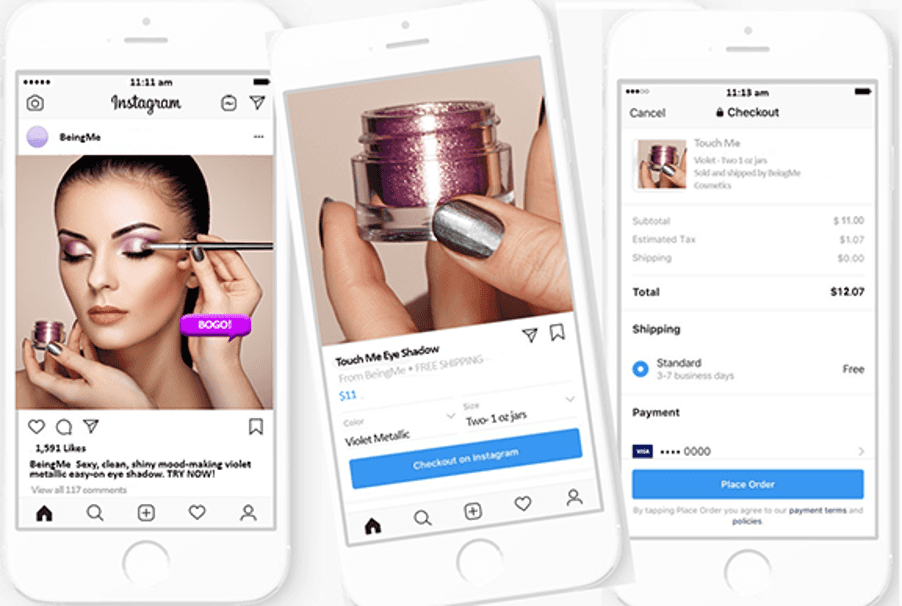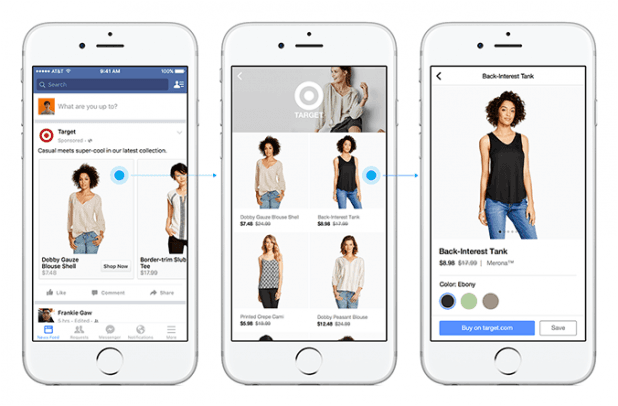The Rise of Social Commerce
Social commerce is a rapidly emerging trend in ecommerce that’s radically augmenting the online shopping experience.
What is social commerce
Social commerce is the use of social media to drive ecommerce transactions. In years gone by this meant using paid, owned and earned media to build visibility and drive traffic to an ecommerce store. In recent years social media platforms are adding the ability to purchase products without leaving the app.
And the future is here. In March 2019 Facebook introduced Checkout, which lets users shop within Instagram although it’s not yet available in Australia. Snapchat and TikTok are also planning to release similar capability in the near future.
Why is social commence important
Social commerce is important as it helps business provide a seamless omnichannel shopping experience, allowing people to shop instantly from anywhere.
The rise of social commerce is makes sense when you consider 71% of Australians use social media for around two hours per day (Social Media 2020). When it comes to social media usage, 89% of Aussie social media users spend time on Facebook and almost 50% on Instagram (Yellow Report 2020). Furthermore, according to 10 Ecommerce Trends:
- 87% of e-commerce shoppers believe social media helps them make a shopping decision.
- 1 in 4 business owners are selling through Facebook.
- 40% of merchants use social media to generate sales.
- 30% of consumers say they would make purchases directly through social media platforms.
With a focus on customer experience and omnichannel ecommerce it was only a matter of time before social media platforms developed in-app ecommerce capability.
We expect to see rapid adoption of people transacting within social media platforms. Doing so is already common practice in countries such as Korea and China, where ‘do everything’ apps such as Kakao and WeChat are used as a primary means to transact with the world. I first saw this in Korea in 2015 while there for business. I remember being surprised when a colleague from the local office used the chat app, Kakao, to also pay for parking and other services.
Social commerce will continue to fuse social media and ecommerce, becoming an important revenue stream and component of the ecommerce playbook.
What should my business be doing today?
Instagram is currently in the process of rolling out its ‘Checkout’ feature, which will enable shopping within the app.

Have a social media strategy
The first thing your business should be doing to maximise revenue is to actively use social media. This includes a strategy that uses paid, owned and earned media to build visibility, drive qualified leads and provide customer service.
Note: You should also be using a business account for Facebook and Instagram. If you haven’t already, Instagram provides this helpful guide.
Setup catalogues in Facebook
A catalogue is a feature accessed through Facebook Business Manager that draws different types of product inventory into Facebook and Instagram. Within the catalogue you can easily manage product details such as price, size and pricing. It’s easy to create sets of products for ads or collections for shops.
Leverage your catalogues
Catalogues will be essential for selling through Facebook Shops and Instagram Checkout. In the meantime, you can leverage your catalogues to create powerful shopping experience. This includes being able to tag and link to products featured in posts. We use catalogues for clients to run dynamic ads, collection ads and carousel ads, which tend to have a good return on advertising spend ROAS).
Tip: See Facebook’s help centre for more on catalogues.

Develop audience insights
Being able to find your audience is critical when it comes to selling anything. Social media is a good for finding and better understanding who their audience is and what they’re into. We recommend dedicating part of your advertising budget to experiment with custom audiences, lookalike audiences, remarketing and content optimisation. By being intentional and tracking the performance of different content and audience targeting you can gain insight to better optimise your content and advertising strategy.
Optimise the customer experience
Being able to sell products and services directly within social media apps is one thing, but in order to keep customers coming back you’ll want to optimise your customer experience. This includes having the right people, process and systems in place to provide a seamless customer experience.
Conclusion
When social media first came on the scene the focus for most brands was engaging their audience and building their online community. Its purpose was largely at the top of the funnel. As social media has evolved, it’s become the world’s most powerful direct marketing tool.
This shifted the focus away from community building and engagement to sales. This trajectory continues with the growth of social commerce. Facebook and Instagram are leading the way in Western countries by adding features to purchase products without leaving their respective platforms.
With brands around the world soon having the ability to sell direct to consumer via their favourite social media platforms, we step closer to being able to provide seamless omnichannel experiences. This is an exciting leap forward but not without some trade-offs.
Like Google and Amazon, social media channels are invested in doing whatever they can to keep people on their platforms. They can do this by removing our reasons to leave, including visiting your business website. It’s too early to say what the impact of this will be in years to come. On the one hand they just become additional marketplaces for people to shop. On the other hand, there may be implications as more brands must rely on the social media giants (remember when reaching your page audience was free?).
Having seen how people use their ‘everything apps’ like WeChat or Kakao to transact with the world, be it friends or commerce, in China and Korea, it’s easy to see the appeal of frictionless and instant shopping experience. There’s no doubt we’ll see rapid uptake in Australia. The real question is will Australia businesses be ready for it.
Checkout on Instagram is currently in closed beta for businesses and available to people in the US. The brands below will begin rolling out today and over the coming weeks — and more will be coming soon!
Adidas @adidaswomen & @adidasoriginals & @adidashoops
Anastasia Beverly Hills @anastasiabeverlyhills
Balmain @balmain
Burberry @burberry & @burberrybeauty
ColourPop @colourpopcosmetics
Dior @dior
H&M @hm
Huda Beauty @hudabeautyshop
Kith @kithfootwear & @kith
KKW @kkwbeauty
Kylie Cosmetics @kyliecosmetics
MAC Cosmetics @maccosmetics
Michael Kors @michaelkors
NARS @narsissist
Net-a-Porter @netaporter & Mr. Porter @mrporterlive
Nike @niketraining & @nikewomen & @nikegolf & @nikesb
NYX Cosmetics @nyxcosmetics
Oscar de la Renta @oscardelarenta
Ouai Hair @theouai
Outdoor Voices @outdoorvoices
Prada @prada
Revolve @revolve
Teespring @teespring
Uniqlo @uniqlousa
Warby Parker @warbyparker
Zara @zara







